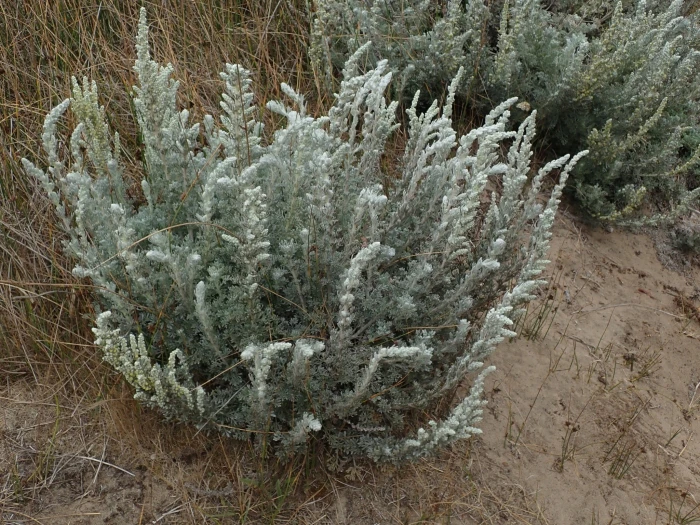Beach Wormwood
(Artemisia pycnocephala)
Beach Wormwood (Artemisia pycnocephala)
/
/

joergmlpts
CC BY 4.0
Image By:
joergmlpts
Recorded By:
Copyright:
CC BY 4.0
Copyright Notice:
Photo by: joergmlpts | License Type: CC BY 4.0 | License URL: http://creativecommons.org/licenses/by/4.0/ | Rights Holder: joergmlpts | Publisher: iNaturalist | Date Created: 2021-06-20T17:27:38Z |
















































Estimated Native Range
Climate Requirements for Waltham, Massachusetts
| This Plant | Your Site | Plant Suitability for Your Location | ||
|---|---|---|---|---|
| • Precipitation | 30" - 42" | 46" | Aquatic | Aquatic |
| • High Temp. | 67°F - 74°F | 83°F | Your summer temperatures are normal for this plant. | Excellent |
| • Low Temp. | 40°F - 44°F | 16°F | Your winter temperatures may be too cold for this plant | Too cold |
This plant may not grow well at your location - your precipitation is too high.
Summary
Artemisia pycnocephala, commonly known as Beach Wormwood, is an evergreen subshrub native to coastal dunes and bluffs along the Pacific Coast, particularly in California. It typically forms dense clumps reaching about 50 cm (20 inches) in height and width. Beach Wormwood has a distinctive appearance with erect stems covered in dense, silvery to light green foliage. The leaves are finely divided, giving them a feathery texture. Small, inconspicuous yellowish flower heads appear in summer, but the plant is primarily grown for its attractive foliage rather than its flowers.
Beach Wormwood is valued for its drought tolerance and ability to stabilize sandy soils, making it an excellent choice for coastal gardens and restoration projects. It is also used in xeriscaping and as a ground cover in areas with dry, poor soils. This plant thrives in full sun and requires well-drained soils, preferably sandy, to mimic its natural habitat. While it is less aromatic than other wormwoods, its foliage still emits a pleasant fragrance when brushed against or crushed. Beach Wormwood is generally pest-free but can be susceptible to root rot if overwatered or planted in poorly drained soils.CC BY-SA 4.0
Beach Wormwood is valued for its drought tolerance and ability to stabilize sandy soils, making it an excellent choice for coastal gardens and restoration projects. It is also used in xeriscaping and as a ground cover in areas with dry, poor soils. This plant thrives in full sun and requires well-drained soils, preferably sandy, to mimic its natural habitat. While it is less aromatic than other wormwoods, its foliage still emits a pleasant fragrance when brushed against or crushed. Beach Wormwood is generally pest-free but can be susceptible to root rot if overwatered or planted in poorly drained soils.CC BY-SA 4.0
Plant Description
- Plant Type: Subshrub
- Height: 0.5-0.7 feet
- Width: 0.3-1 feet
- Growth Rate: Rapid
- Flower Color: Cream, Yellow, Green
- Flowering Season: Spring, Summer
- Leaf Retention: Evergreen
Growth Requirements
- Sun: Full Sun
- Water: Low
- Drainage: Fast
Common Uses
Bank Stabilization, Bee Garden, Bird Garden, Border Plant, Butterfly Garden, Deer Resistant, Drought Tolerant, Fragrant, Groundcover, Low Maintenance, Rabbit Resistant, Salt Tolerant, Street Planting
Natural Habitat
Coastal dunes and bluffs along the Pacific Coast
Other Names
Common Names: Coastal Sagewort, Sandhill Sage
Scientific Names: Artemisia pycnocephala, Oligosporus pycnocephalus, Artemisia pachystachya, Artemisia campestris subsp. pycnocephala, Artemisia campestris var. pycnocephala, Artemisia pycnostachya
GBIF Accepted Name: Artemisia pycnocephala (Less.) DC.